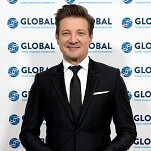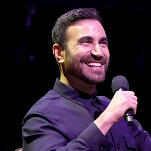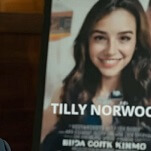Song And Vision No. 2: "The Power Of Love" and Back To The Future

The
stated goal of Song And Vision, to
paraphrase myself from column No. 1, is to figure out exactly why pop
songs and movies work so well together. One reason is time, or the lack
thereof. Unlike you or me, pop songs and movies have the power to stare down
time and walk right on past it. It's like that Byrds song, "She Don't Care
About Time." She
might not care about time, but time will eventually make her fat, crotchety,
and an obsessive accumulator of collectible figurines. Citizen Kane, on the other hand, don't care about time, and
time don't care about it. That's what makes Citizen Kane timeless: it successfully
sidestepped the rules of the time-space continuum. No matter when you watch it, Citizen Kane always
takes place in the present. The same is true of "Johnny B. Goode." The song
originated in the mid-1950s but it isn't set there. It's set in the moment you
hear you it. It moves forward with the rest of us, but never, ever changes.
Maybe we prize timelessness in our art so much because it's utterly elusive to
us as people. Orson Welles and Chuck Berry don't care about time, but time sure
did a number on them.
Let's
make one thing clear, though: timeless does not automatically equal greatness. Citizen
Kane and
"Johnny B. Goode" are great, but "Brown Eyed Girl" is as exuberant and
feel-goody today as it was in 1967 when Van Morrison first released it, and I
fucking hate that song. Honestly, I hope every wedding that plays that song
ends in a long, soul-destroying, financially crushing divorce. On the flipside,
dated does not automatically equal bad. Datedness is one of the most underrated
attributes for a song or film. I'm not talking about getting stoned and
giggling through Reefer Madness, or throwing one of those bozo '70s parties where
everyone dresses like the Bee Gees on the cover of the Saturday Night Fever soundtrack. I'm talking
about experiencing the past as it really felt at the moment when what you're
hearing or seeing was created. I get that from Steely Dan's seminal,
soft-rockin' '70s albums, which I love so much, in part, because of how vividly
they evoke the sunny, shallow environs of Watergate-era southern California. (I
often picture scenes from Shampoo, Night Moves, or The Long Goodbye when I play them.) "Hey
Nineteen" is great because it clearly isn't set in the present. Donald
Fagen and Walter Becker's weariness in spite of the Cuervo Gold and the fine
Colombian seems very specific to the end of the go-go '70s and the oncoming
over-correction of the buttoned-down Reagan era. Steely Dan's best work makes
datedness an aesthetic plus by turning the rules of time on their head, somehow
staying vital by staying put. The same applies to a lot of dated things I love,
whether it's Robert Johnson's bluesy howls from the dark depths of the '30s Jim
Crow South, or the deliriously smutty '60s counterculture satire of Beyond
The Valley Of The Dolls. Experiencing these things is the closest I'll ever get to time
travel.
Which
brings us to the vision part of this column's equation, Back To The Future, a comedy starring
Michael J. Fox as a California teenager who travels back in time 30 years and
unwittingly inspires Chuck Berry to write "Johnny B. Goode." Back To The
Future is
both undeniably timeless (its place in pop culture is beyond question) and
incredibly dated (it's very much a product of its time). Interestingly, it's a
period piece made in 1985 that depicts 1985 as an era as distant-seeming as its
version of 1955. Of course, when Back To The Future was first released, 1985
just looked like "now." It's entirely possible that director Robert Zemeckis
and co-writer Bob Gale referenced Ronald Reagan and Eddie Van Halen and dressed
Fox's Marty McFly up in a denim jacket and Calvin Klein underwear because they
wanted Back To The Future to exist in the same universe as The Breakfast
Club, Girls
Just Want To Have Fun, and other
teen films from 1985. But I'm going to give them way more credit than they
probably deserve. I think Zemeckis and Gale knew all the timely accoutrements
signifying "the present" in Back To The Future would inevitably look like
1985 within just a couple of years; in fact, they were banking on it. Zemeckis
and Gale were trying to create an archetypical representation of 1985 just like
they did for 1955, with its soda fountains, social repression, and subjugated
black people. In this way, Back To The Future only gets better the further
we get from the '80s. Everything that defines Marty McFly—how he walks,
talks, acts, and dresses—acts as instantly recognizable shorthand for the
year he comes from. (For you cooler-than-thou folks who were listening to Hüsker
Dü and watching Jim Jarmusch movies in 1985: Congratufuckinglations. You are
awesome. I bet you totally wouldn't have been the guy smoking pot at Woodstock
in the '60s, or doing blow at Studio 54 in the '70s. I guess an archetype is
only a generalization that's true in the abstract, but it's open to question
when applied to each and every individual person living at the time. Hopefully
you can set that aside and stay with me here.)







































